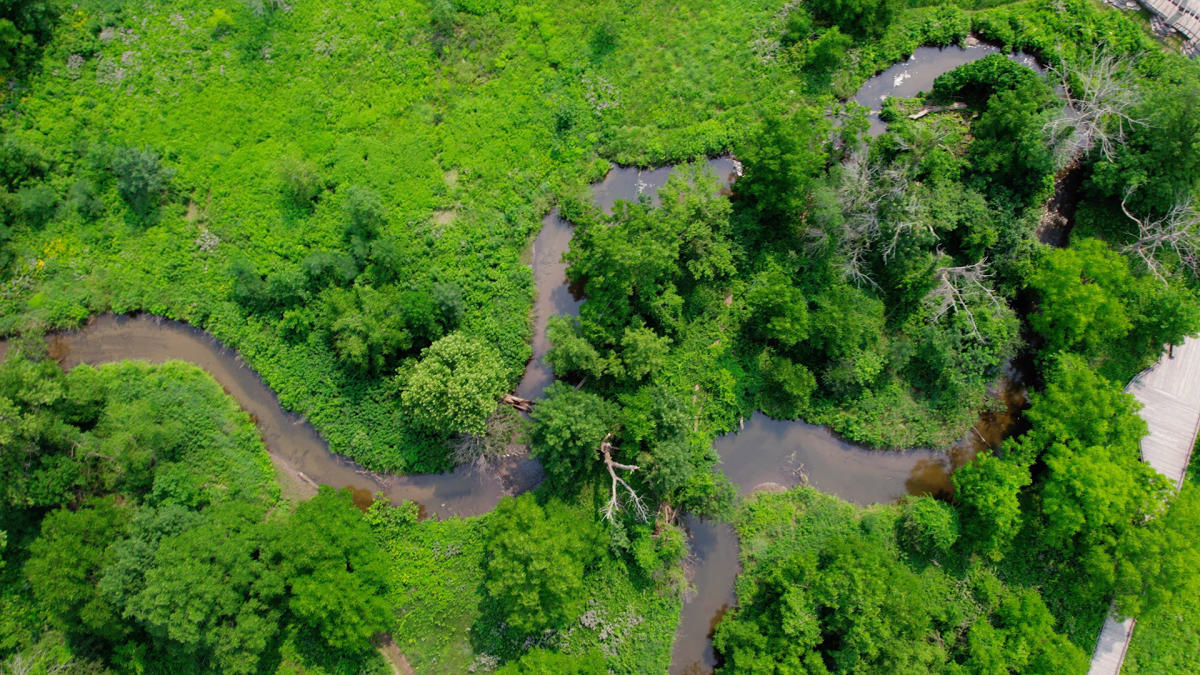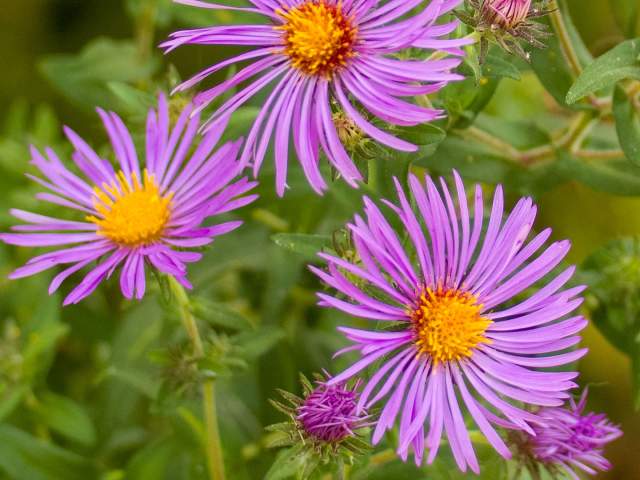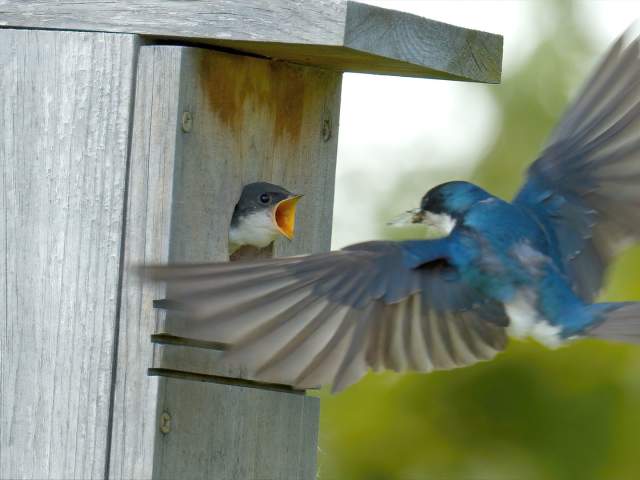Discover Coffee Creek Preserve
This remarkable 157-acre nature preserve combines over five miles of trails, seven bridges, a soaring fountain, a meandering creek, picnic tables, and an amphitheater, all within a carefully restored wetland. With abundant birds and wildflowers, Coffee Creek offers a vibrant natural habitat nestled beside residential and commercial areas.
The Geological Story of Coffee Creek Preserve
Like much of the region, Coffee Creek’s story begins with glaciers. As the glacial ice sheets receded some 18,000 years ago, they left behind a rich and varied mixture of clay, sand, gravel, and even boulders. Today the creek is fed not only by seasonal precipitation but also by groundwater flowing from the high ridges of the Valparaiso moraine, another legacy of the glaciers.

Geology You May See
Over five miles of trails composed of pavers, granite fines, boardwalk, and wood chips are comfortable for hiking and biking, with portions being suitable for wheelchair access.

Marvelous Plants of Coffee Creek Preserve
Native wildflowers and shady trees line the miles of trails at Coffee Creek Watershed. In fact, over 500 native plant species can be found here, including beautiful coneflowers and bright red catchflies--a hummingbird favorite! Old-growth trees still stand at the watershed, including beech, maple, and sycamore trees. You can even spot pawpaw trees here: these unique plants boast the largest native edible fruits in the U.S., and are sometimes called the Indiana or Hoosier Banana!
Plants You May See
Birds You May See
The Beautiful Birds of Coffee Creek Preserve
The trees, flowers, and waters of Coffee Creek all beckon to a variety of beautiful birds. Waterbirds like Osprey and even the endangered Virginia Rail have been spotted here. And volunteers are hard at work helping other species thrive, carefully managing Eastern Bluebird nesting boxes in the preserve.
Each bird has its own preference for living quarters. Northern Flickers enjoy nast-cavity trees here, and a special platform has been built to encourage Osprey to make Coffee Creek Preserve their home. A provided “hotel” is home for Martins, including decoys that increase visitation.

Pawpaw fruit tastes a bit like a banana crossed with a mango, and tastes best after it falls in mid-October. Please don’t pick the fruit from the trees, but watch the ground as you walk!
Because so many insects thrive in the creek, it’s also a great spot for crawdads! These fierce-looking freshwater crustaceans are quite shy, and will swim backwards when approached.
Fellow nature lovers can lend a helping hand to clear trails, monitor creek water health, plant new flora, and more.
Plan Your Visit
- 2401 Village Point
- 219-926-1842
This beautiful 157-acre preserve is a relaxing place to hike, wander, picnic, and cross-country ski. Five miles of trails pass through restored prairie, creek, wetlands, and woodlands…
What to Expect
Street parking is available in front of the Preserve. A small parking lot is also available off Sidewalk Road, to the north. Restrooms are available near the Pavilion.
Be Ready
Poison ivy can grow alongside the trail, and portions can become wet and muddy. Be sure to wear appropriate clothing and footwear. Bring along a reusable water bottle and snacks.
Be Safe
Mosquitoes and ticks can be a nuisance in the summer, so be sure to use Environmental Protection Agency (EPA)-registered insect repellents. Check yourself for ticks after your hike.
Be Responsible
Visitors must stay on designated trails at all times. We have created a video to help you learn about your role in enjoying the dunes area safely while minimizing your impact on the park.
How to Help
We are all responsible for protecting our parks for future generations. The Indiana Dunes, as a whole, is one of he most biodiverse areas in the United States. Here are some tips to help you limit your impact on the natural habitats in the dunes area.
Get Involved
Be the Change — Volunteer! Get more involved with the Indiana Dunes! There are many no-hassle, drop-in volunteer opportunities available for everyone. Just show up!
Love & Protect the Dunes
Each of us who visit the Indiana Dunes can also help protect natural heritage, biodiversity, and local culture by taking a few simple steps.





































































